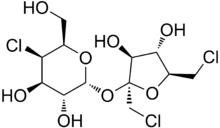Actual Answers from the experiment
1. Does hot water or cold water freeze faster?
2. Does hot water or cold water boil faster?
3. Does salt water freeze faster or slower than regular water?
· Salt water freezes slower than regular water.
1. Pictures of experiment
In my experiment I had the sections of the ice tray so all the different water was separate from each other and I labeled what was were starting with hot water, cold water, and finally salt water. I thought this was the best way for me to do my experiment.
This is a picture of the pot I used boiling the water. I boiled water two different times because I wanted to use the same size of pot for my experiment. So I did one experiment allowed it to cool (the pot) and then I continued on to the next part of my experiment.
2. Your hypothesis to the questions posed
· My hypothesis for does hot water or cold water freeze faster would be that I think that hot water would freeze faster, because this is something I had learned a long time ago. I think originally I had thought though that cold water freezes faster when I was younger.
· My hypothesis for does hot water or cold water boil faster is that I think that like freezing that the cold water will boil faster, because I think this would be like the first experiment that it is opposite than what you would think.
· My hypothesis for does salt water freeze faster or slower than regular water is that I think that salt water will freeze faster than regular water.
3. Data in the form of a graph or table
Hot Water | Freezes Faster | Than Cold |
Hot Water | Boils Faster | Than Cold |
Salt Water | Freezes Slower | Than regular |
4. Show data of experiment repeated
· I ran both of the experiment two different times with similar amount of salt and as similar temperature as I could to get the experiment as accurate as I could. In both experiments I found the same results.
5. List your controlled variables for your experiment
· Temperature of the water (for both hot and cold experiment)
· Amount of salt put into the water
· Temperature of the freezer
· Temperature of the stove
6. Formulate a theory that answers the questions posed.
· So cold water needs a higher temperature evaluation than hot water does, so this would be why hot water boils faster than cold water.
7. Image of the atoms that make up water molecules.
8. Video or animation that shows how water molecules are arranged in the three states of matter for water.
· The above website that I posted will take you to a webpage that shows the three states of matter for water which is solid, liquid, and gas. There are a couple of different images here that I feel are very helpful.
9. Describe the scientific method/process and how each step correlates to your own experiment.
· The process of the experiment is very simple.
1. Get your materials that you need. Ice tray, pot, water, salt, freezer
2. Put hot water and cold water in the freezer and record your data
3. Put hot and cold water in two different pots and record your data
4. Finally put salt and water in an ice tray and regular water in an ice tray and than record your data.














